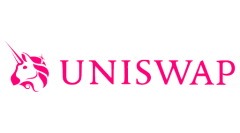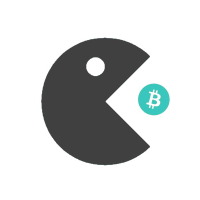Uniswap

What is Uniswap?
When you buy decentralised cryptocurrencies like Bitcoin and Litecoin that do not depend on any one entity, the chances are that you will buy them at a centralised exchange like Coinbase or Binance. That’s the great irony of the crypto world.
Uniswap, which launched in November 2018, and other exchanges like them (Sushi Swap, Pancake Swap, and Shiba Swap which is part of the Shiba Inu cryptocurrency ecosystem) are trying to change all of that. The system is closely linked to Ethereum: The creator is Ethereum developer Hayden Adams, and he was heavily influenced by Ethereum creator Vitalik Buterin.
Uniswap is the top decentralized crypto exchange by volume. It operates on the Ethereum blockchain.
In a traditional exchange like Kraken or Gemini, users deposit FIAT such as US$ or cryptocurrencies like Bitcoin and use a traditional order book system to trade.
If you want to sell a currency, the exchange matches you with someone who wants to buy that currency and the deal is done. The more volume and money sloshing around the system (or liquidity), the better, as trades are more efficient. Buyers can buy at the price that they want quickly, and sellers are also happy.
The amount of buy and sell orders for a particular currency or token is called the market depth.
The main issue with this set up is liquidity: the number of orders on the order book at any instant. If liquidity is low, the system may not be able to fill their orders.
How Does Uniswap Work?
Uniswap is trying to re-invent the wheel with a decentralised system. It operates a system known as Automated Liquidity Protocol.
Uniswap began its life on the Ethereum blockchain, so it facilitates exchange between ERC-20 tokens and wallets like MetaMask and MyEtherWallet.
Uniswap is open source. Anyone can set up their own decentralized exchange (DEX) and users can list tokens on the exchange for free.
Normal centralized exchanges are profit-driven and charge very high fees to list new coins, so this alone is a notable difference. Users keep control of their funds at all times – they are always in control of their private keys. In a centralised exchange, that is not the case.
Uniswap runs on two smart Ethereum contracts (read our Ethereum explanation for a deeper dive into this). The 2 contracts are an “Exchange” contract and a “Factory” contract.
These pieces of code carry out specific tasks when certain conditions are met. The Factory contract add new tokens to the platform and the Exchange contract carries out the trades or token swaps, or “trades.” You can swap any ERC20-based token with another on Uniswap. this includes Wrapped Bitcoin, which is pegged to BTC and enables user to effectively trade in and out of the biggest coin.
Automated Liquidity Protocol
Uniswap generates liquidity automaitically by incentivizing traders to become liquidity providers (LPs):
Uniswap users pool their money into funds that execute the trades on Uniswap: they get a cut of the action for their trouble.
Every tradeable token on Uniswap has its own pool that users can provide liquidity for. The prices for each token are calculated with an algorithm.
Buyers and sellers do not have to wait for someone to appear at the opposite side of the trade. They can trade there and then at the published price as long as there is liquidity in the pool.
The LPs are paid with tokens for putting up the funds, kind of like staking into the pool. The tokens give you the right to claim a share of the trading fees.
Uniswap charges a 0.30% fee for every trade which goes to a liquidity reserve. When a Liquidity Provider wants to cash out, they get a percentage of the total of the reserve based on their percentage contribution to that pool.
The fee configuration was changed following an upgrade to Uniswap v.2. 0.05% of every 0.30% trading fee may be deposited in a fund to finance future development. Currently, this is not switched on. If it is activated, LPs will receive 0.25% of pool trading fees.
How Unswap Sets Prices
Wherease a centralised exchanne uses an order book system to set prices through supply and demand (matching buyers and sellers), Uniswap is run with an Automated Market Maker System.
This is essentially an algorithm that increases and decreases the price of a coin based on the ratio of how many coins there are in the respective pool.
When a new ERC-20 token is added to Uniswap, an amount of that ERC-20 token plus an equal amount of the other ERC-20 token in the pair must be added to kick off the liquidity pool.
Keeping in Line With the Market
Uniswap kees token prices in line with the rest of the market through a system called Arbitrage.
There are traders that look for differencies in prices of coins between exchanges for profit. They trade these in large volumes for profit and this helps to match the Uniswap prices with the overall market.
Trading on Unswap
To trade on Uniswap you will need an ERC-20 wallet like MetaMask, WalletConnect, Coinbase wallet, or Fortmatic.
Once you have a wallet, you will need some funds on it to pay for trades (the gas). The price will depend on the speed of transaction that you order.
Uniswap tokens (UNI)
The Uniswap token, UNI, was launched to enable holders to vote on development and the direction of the system, and were created to stop people defecting to SushiSwap – a UniSwap fork.
Uniswap minted 1 billion UNI tokens and distributed 150 million to people who had ever used the platform. Each person got 400 UNI. All of the UNI tokens will be issued over four years. After that, there will be a “perpetual inflation rate” of 2% to help keep up participation in the network.
At the moment, roughly 60% of the token supply is owned by Uniswap users, 22% is owned by team members, 18% by investors and the rest by advisors.
Where Can you Buy UNI?
Uniswap (UNI) is available on most major exchanges, and of course on Uniswap! You can buy UNI at Binance, Coinbase, FTX, Kraken and other exchanges. It isnow one of the major coins by market cap.
